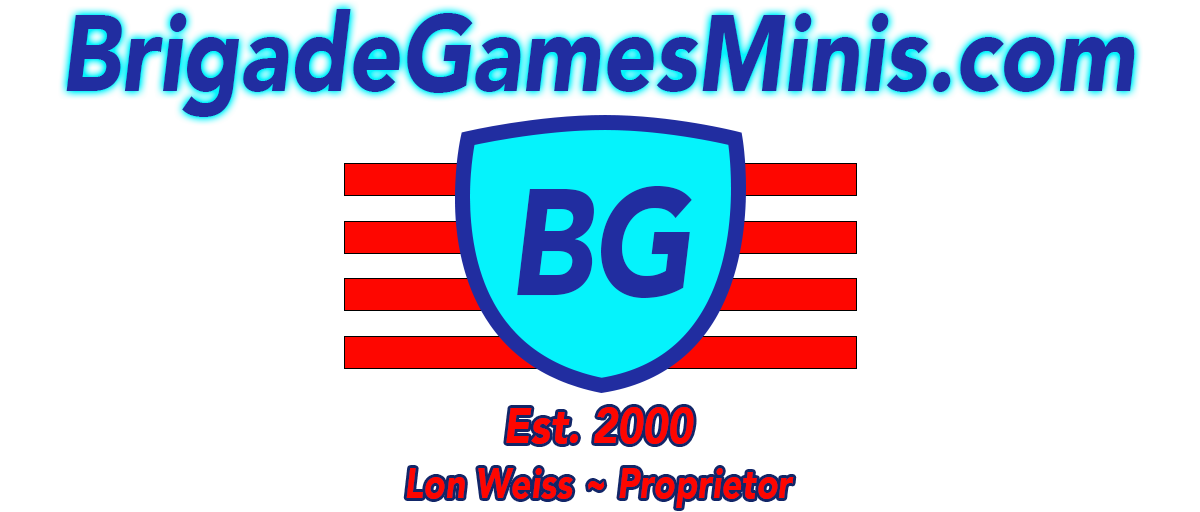A Corner of Hell" is a set of rules designed for fast, enjoyable skirmish level games set in the Second World War. It is based fairly closely on the mechanisms which we first introduced a few years ago in
"At Close
Quarters", our generic set for 20th and early 21st century small unit actions, but it incorporates a number of differences designed to make it more suitable for the specific conditions of combat in World War II. There are also a handful of other minor amendments and clarifications which might eventually appear in a third edition of
"At Close Quarters".
By "skirmish" we mean a game representing combat at the small unit level, in which one figure on the table represents one real man. Unlike many skirmish rules, however, these do not go into great detail about the abilities of each man, or the different types of wound which he may suffer. This avoids the need to determine the characteristics of every figure before the game, and to keep written records during it. If you are hit badly, you are down for the duration: this not only speeds up the game, but we feel it is also far more realistic, in view of the trauma which 20th century weapons can inflict. In these rules figures move (subject to certain restraints) and fight as individuals, but for command, manoeuvre and morale purposes the basic element of play is the section.
Platoons represent the largest formations normally controlled by a single player, though a company sized force is quite feasible in a multi-player game. We have replaced the general guidelines for force composition which appear in
"At Close Quarters" with a selection of historical platoon organisations for some of the major combatants. This is by no means comprehensive, though eventually we may release a companion "army list" book which will fill in most of the obvious gaps.
By "fast" and "enjoyable", we mean just that. It is our philosophy that to be enjoyable, a game of this type has to play quickly and smoothly, without having to hold up the action while you wade through pages of over-complicated rules. For this reason we have not included ammunition supply rules, or details for all the possible equipment which might be used in a real conflict. In particular, rules for armoured combat and off-table artillery and air support have been simplified, and to some extent stylised, in order not to distract players too much from the infantry fighting which is the main focus of the rules.
There are no points values in
"A Corner of Hell". For wargames simulating larger scale battles it is generally helpful to have a method of calculating forces of equal fighting strength, so that a balanced game can be put together at short notice without the need for an umpire. In a skirmish game, though, there are too many variables which can drastically influence the situation, and too many possible options which may be vital in one game but completely useless in another. So instead we have chosen to emphasise historical units as the basis for our force structures, without tying players too strictly to rigid tables of organisation. Games without points systems usually require some thought to be given to the devising of scenarios - a question which unfortunately cannot be properly dealt with here without making the rule book twice the size. There is no reason why you should not simply put two roughly evenly matched sides on the table and set about each other, but in general a game will be more realistic if the forces have some sensible objectives apart from mutual slaughter. Patrolling, infiltrating through enemy lines, rescuing a downed pilot, or laying an ambush are typical missions which could be used as the basis for a game. On the other hand, large scale battles in difficult terrain often broke down into a series of disconnected infantry combats which are also ideally suited to these rules. House clearing in Stalingrad, or fighting through the jungles of Burma or the hedgerows of Normandy, are among the examples which spring to mind.
"A Corner of Hell" has been written mainly with the larger figure scales in mind - ie. 20mm and 25/28mm. Nevertheless there is no reason why the
game should not be played with 15mm or even 6mm figures, or in fact with models in any scale you prefer. We have not specified any precise relationship between figure scale and ground scale, nor do we think that it matters
much. The system works as a game and generally allows real-life tactics to have roughly their real-life results, which we think is more important than worrying about the exact relationship between the theoretical ranges of various weapons. All distances are given in inches rather than notional yards or metres, which avoids having to keep on converting between different units during play. If using 15mm or smaller figures, however, players may prefer to substitute centimetres.

